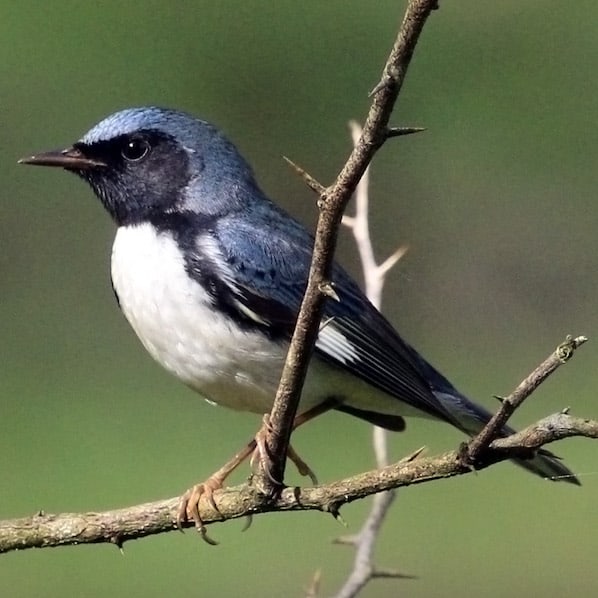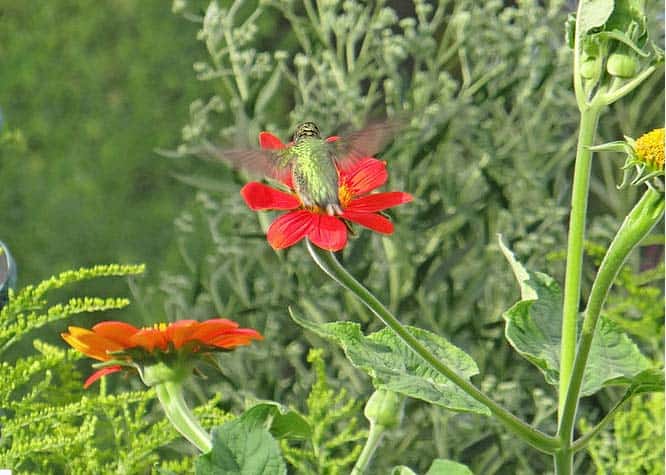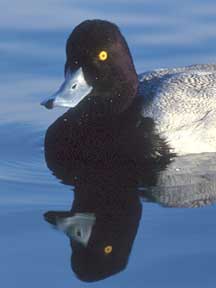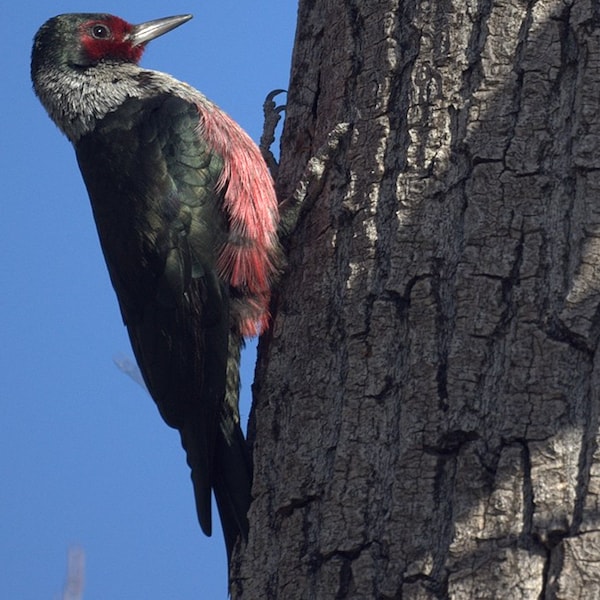Look For
The black-throated blue warbler is a small bird named for the males’ deeply pigmented plumage. An adult male has a black throat, face, and flanks that contrast with the rich royal blue of its crown, neck, and back. It has a white belly and a distinctive small white patch on its wings.
An adult female is much more mundane in appearance with a greenish-brown coloration on its crown, neck, and back. It has a mild yellow belly, a gray face, and shades of darker browns on its tail and wings. Like the males, the females often have a small patch of white on their wings.
Listen For
The black-throated blue warbler’s song has a rising inflection of zoo-zoo-zoo-zweeee. It has a husky, buzzy quality and is a little slower than the songs of other warblers.
Find It
Black-throated blue warblers can most often be found in the hilly, forested areas of the northeastern United States and southeastern Canada. For breeding, they prefer thick, dense undergrowth and shrubbery amongst mixed deciduous-coniferous woodlands.
During their migration down south across the United States, they are found in various habitats such as gardens, parts, or forests. During the winter they spend time in Central America among dense tropical forests and gardens.
Feeding Behavior
Compared to some other warblers, black-throated blue warblers are dedicated to foraging, choosing to focus their efforts on the lower parts of trees and forest understory. In the summertime they feed primarily on insects, preferring caterpillars, spiders, and crane flies. They do this by gleaning on foliage and hovering to catch insects midair. In the winter, when there are fewer insects, they also feed on seeds, berries, and nectar.
Nesting Behavior
Black-throated blue warblers prefer to build their nests in thick shrubs or saplings in a fork. Females construct the nests with the help of the males who gather building material. The nest consists of bark and plant fibers in an open cup shape, held together by cobwebs and saliva and lined with moss and hair.
Females lay 2-5 eggs that are off-white with specks of brown and gray towards the larger end. The female incubates the eggs for 12-13 days before hatching. Males usually take charge of feeding the young before they leave the nest after 8-10 days.
Wow!
Due to their sexual dimorphism, male and female black-throated blue warblers were once believed to be different species. Famous American ornithologist Alexander Wilson, unaware of this misconception, dubbed the female a “Pine Swamp Warbler” in the 19th century.




